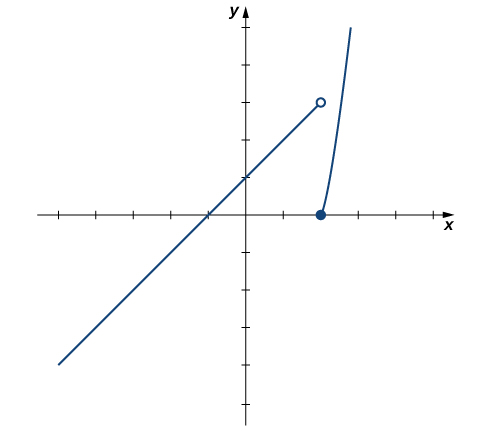| << Chapter < Page | Chapter >> Page > |
Similarly, as x approaches 2 from the right (or from the positive side ), approaches 1. Symbolically, we express this idea as
We can now present an informal definition of one-sided limits.
We define two types of one-sided limits .
Limit from the left: Let be a function defined at all values in an open interval of the form z, and let L be a real number. If the values of the function approach the real number L as the values of x (where approach the number a , then we say that L is the limit of as x approaches a from the left. Symbolically, we express this idea as
Limit from the right: Let be a function defined at all values in an open interval of the form and let L be a real number. If the values of the function approach the real number L as the values of x (where approach the number a , then we say that L is the limit of as x approaches a from the right. Symbolically, we express this idea as
For the function evaluate each of the following limits.
We can use tables of functional values again [link] . Observe that for values of x less than 2, we use and for values of x greater than 2, we use
| x | x | |||
|---|---|---|---|---|
| 1.9 | 2.9 | 2.1 | 0.41 | |
| 1.99 | 2.99 | 2.01 | 0.0401 | |
| 1.999 | 2.999 | 2.001 | 0.004001 | |
| 1.9999 | 2.9999 | 2.0001 | 0.00040001 | |
| 1.99999 | 2.99999 | 2.00001 | 0.0000400001 |
Based on this table, we can conclude that a. and b. Therefore, the (two-sided) limit of does not exist at [link] shows a graph of and reinforces our conclusion about these limits.

Use a table of functional values to estimate the following limits, if possible.
a. b.
Let us now consider the relationship between the limit of a function at a point and the limits from the right and left at that point. It seems clear that if the limit from the right and the limit from the left have a common value, then that common value is the limit of the function at that point. Similarly, if the limit from the left and the limit from the right take on different values, the limit of the function does not exist. These conclusions are summarized in [link] .
Let be a function defined at all values in an open interval containing a , with the possible exception of a itself, and let L be a real number. Then,
Evaluating the limit of a function at a point or evaluating the limit of a function from the right and left at a point helps us to characterize the behavior of a function around a given value. As we shall see, we can also describe the behavior of functions that do not have finite limits.
We now turn our attention to the third and final function introduced at the beginning of this section (see [link] (c)). From its graph we see that as the values of x approach 2, the values of become larger and larger and, in fact, become infinite. Mathematically, we say that the limit of as x approaches 2 is positive infinity. Symbolically, we express this idea as

Notification Switch
Would you like to follow the 'Calculus volume 1' conversation and receive update notifications?